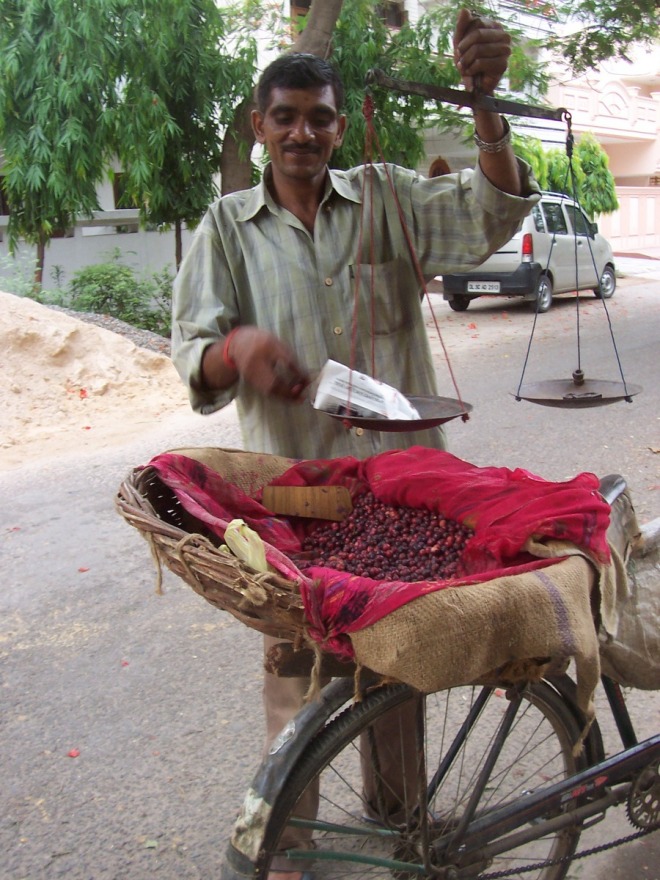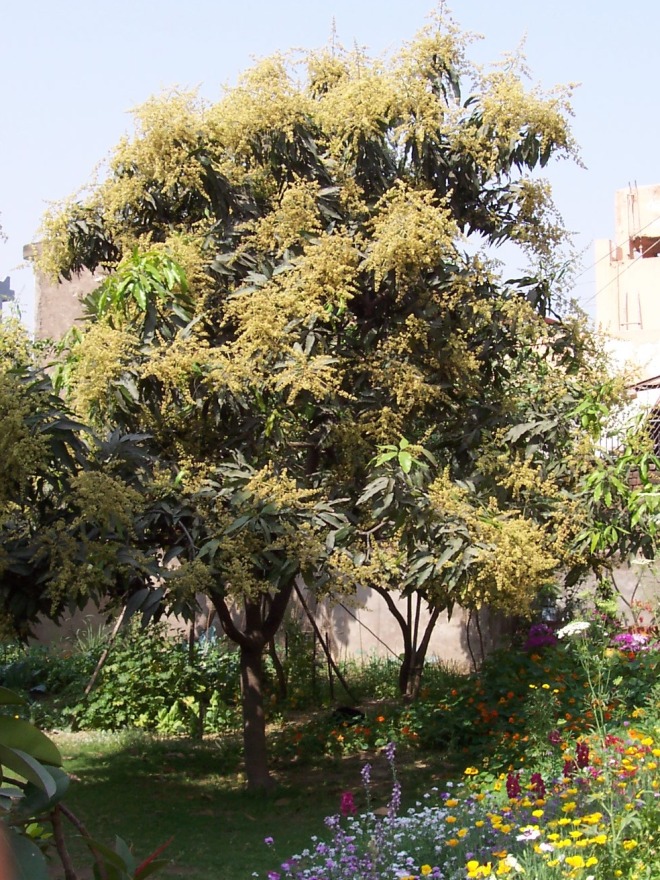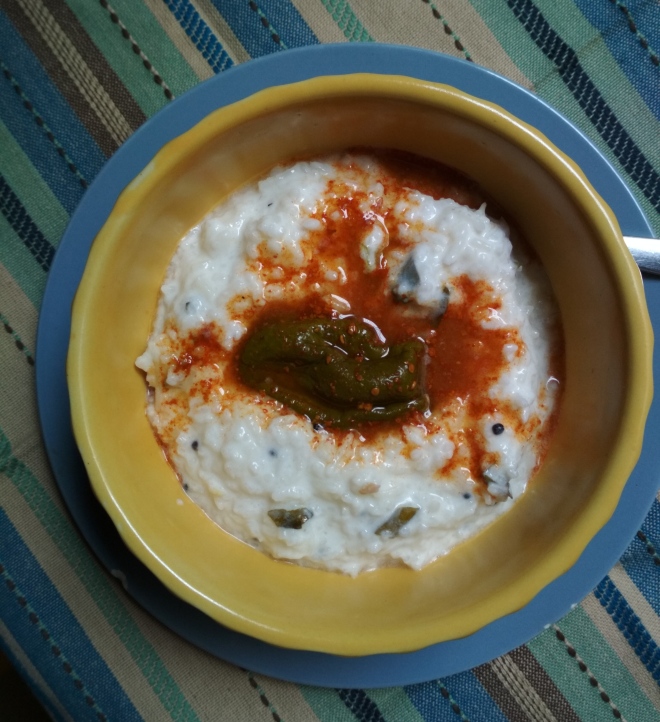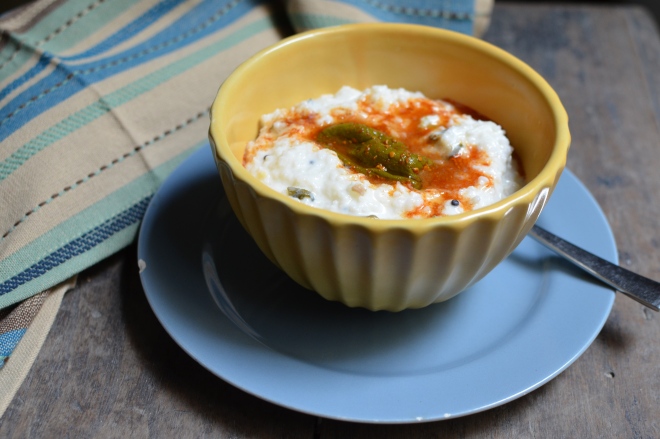It’s summer and the mangoes are maturing on the trees. The blazing sun keeps all of us indoors – it’s the sanest thing to do. Appetites are waning and you are perpetually parched.
“I hate summer!” you may be tempted to say. But then you remember the mangoes. And the phalsewala who has started doing his rounds. The trees of Delhi come into their own in the summer. The orange of the Semul in early summer has given way to the crimson of Gulmohurs and the trailing yellows of Amaltas.

In the North Indian plains, the mango blooms in early March. The inflorescence consists of hundreds of delicately perfumed flowers that bring the bees in droves. Naturally, not all flowers become fruit and not all fruits reach maturity. A large bunch will perhaps have a dozen mangoes at the most. Most of the fruit falls to the ground through the growth period. We (my Dad) have two trees of the Amrapali variety which grows into a luscious sweet fruit with deep orange pulp when it ripens in early July. When it is green and immature it is tart enough to make a good pickle. But the tiny mangoes that make up the first lot of the fallen fruit end up in the compost pit.

This year I used the early fallen fruit from Dad’s mango trees to make South Indian maavadu, the much-loved pickle of baby mangoes in brine. Judging by the fact that I have eaten it every day this week, I would say it is a success. For a change, picky V likes a pickle I’ve made. Looking at the pictures of the jars of pickled mangoes many readers on my Instagram feed suggested that this pickle and curd-rice were made for each other. Not only is the combination perfect bit it is also downright addictive.
I can live on thayir sadam (sa-dum). I’m, going to change that to “I can live on thayir sadam and vaadu mangai!” Thayir sadam from my school friend Rajamma’s tiffin box may well be what got me hooked to Tamil flavours; she is truly my soul-sister. Curd-rice a great idea for packed summer lunches needing no side-help when infused with flavours of green chillies, curry leaves, and ginger. At the most, you may top it with a wedge of lime pickle or, as has been the case this week, maavadu. If the weather is hot and the curd is likely to sour too much add a little bit of milk to your curd-rice mix. It will curdle by lunch time to give you the perfect level of sourness you want.
There are many ways to prepare thayir sadam or dahi bhat. Maharashtrians also always conclude a meal with dahi bhat and rarely add a tempering. In Southern India a tempering is always added if it is prepared as a dish. You can also just mix rice with dahi on your plate as the last course and eat it plain, with a pinch of salt or without, and with pickle or without. Lightly mash the rice, add salt and dahi, and enjoy this cooling elixir. You can do a basic tempering of mustard seeds and curry leaves or go the whole hog (recipe below). Any which way you eat it, it’s the best way to beat the heat.
 My version of
My version of
Thayir Sadam
Curd-rice – rice with yoghurt
3 C cooked rice (or 1/2 C white rice cooked in 1 1/2 C water)
1-1 1/2 C dahi (yogurt)
1 T peanut oil
2 dried red chilles, broken into half
1 green chilli, chopped
1 heaped teaspoon mustard seeds
1 T grated fresh ginger
3-4 curry leaves, chopped (or whole)
- Soak rice for 20-30 minutes. Pressure-cook the rice using slightly more water than you usually do. For basmati rice I add 2.25 times the water for everyday cooking; when cooking for curd rice I use 2.5x.
- Prepare the tempering while the rice cools. Heat oil in a heavy bottomed pan or small karahi.
- Add mustard seeds and cover the pan to catch the popping seeds.
- Lower the heat, and add the red chillies. Allow them to change colour for a few seconds before adding the green chillies and ginger.
- Add the curry leaves. Do not let anything brown. Cover to contain splattering oil.
- Stir till everything is fragrant and turn the heat off. I usually add a half cup of water to the pan at this point. It prevents browning and allows the contents to be cool enough to be added to the yogurt right away giving a longer time for flavours to infuse.
- Once the rice has cooled, mash it with a light hand, add the tempered dahi, season with salt, and mix.
- Serve on its own or with a hot mango or lime pickle.






Love this so much these days in the Dubai heat that I’ve started making big batches of dahi at home! And that mango pickle is just the star of the dish. But I also put onions in the tadka because they give a nice crunch to the dish. Wrote my version of the recipe a few weeks ago. Please check it out 🙏🏽
https://kitchenpostcards.wordpress.com/2018/04/27/cooling-curd-rice-dahi-chawal/
yum yum and YUM. I am heading to Pune soon. can’t wait for the dahi bhaat. Will you please share the pickle recipe too?
I distinctly remember binging on this pickle that a family friend made for us year after year. Beautiful pics and what a lovely post!
Thank you for reading, Gauri.
I can’t believe that you are not a true blue tamil ponnu. You should do past life regression to check if you lived in Trichy in a lifetime 🙂
😀 I am sure I am, Lavanya! I have admitted to this past life connection in many a post!